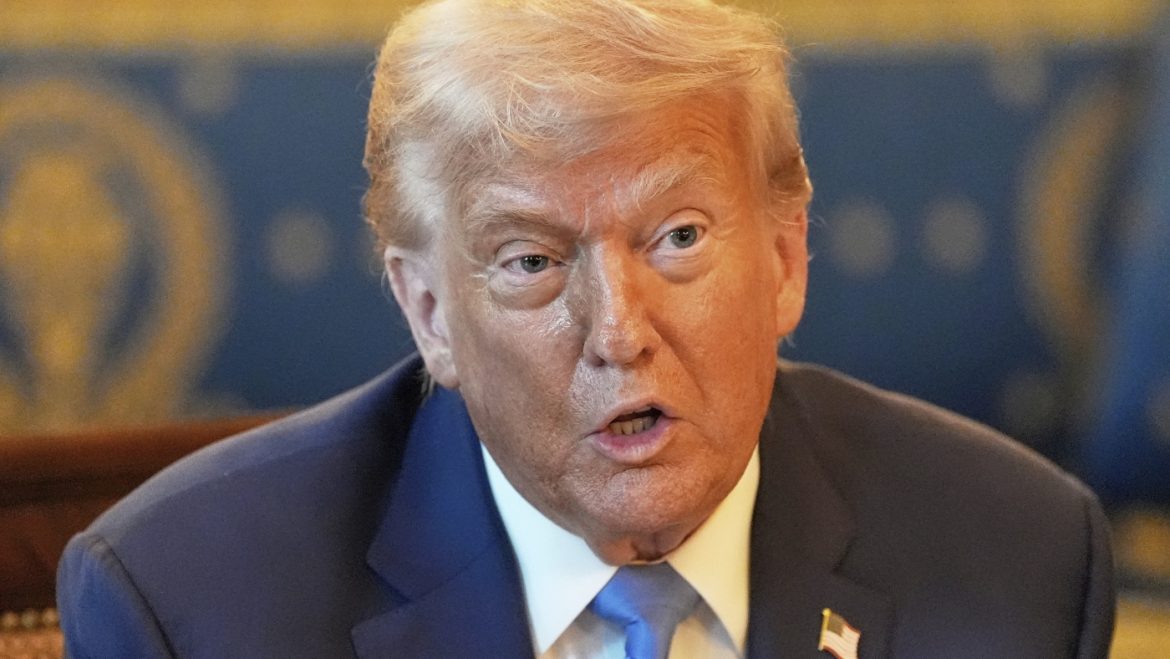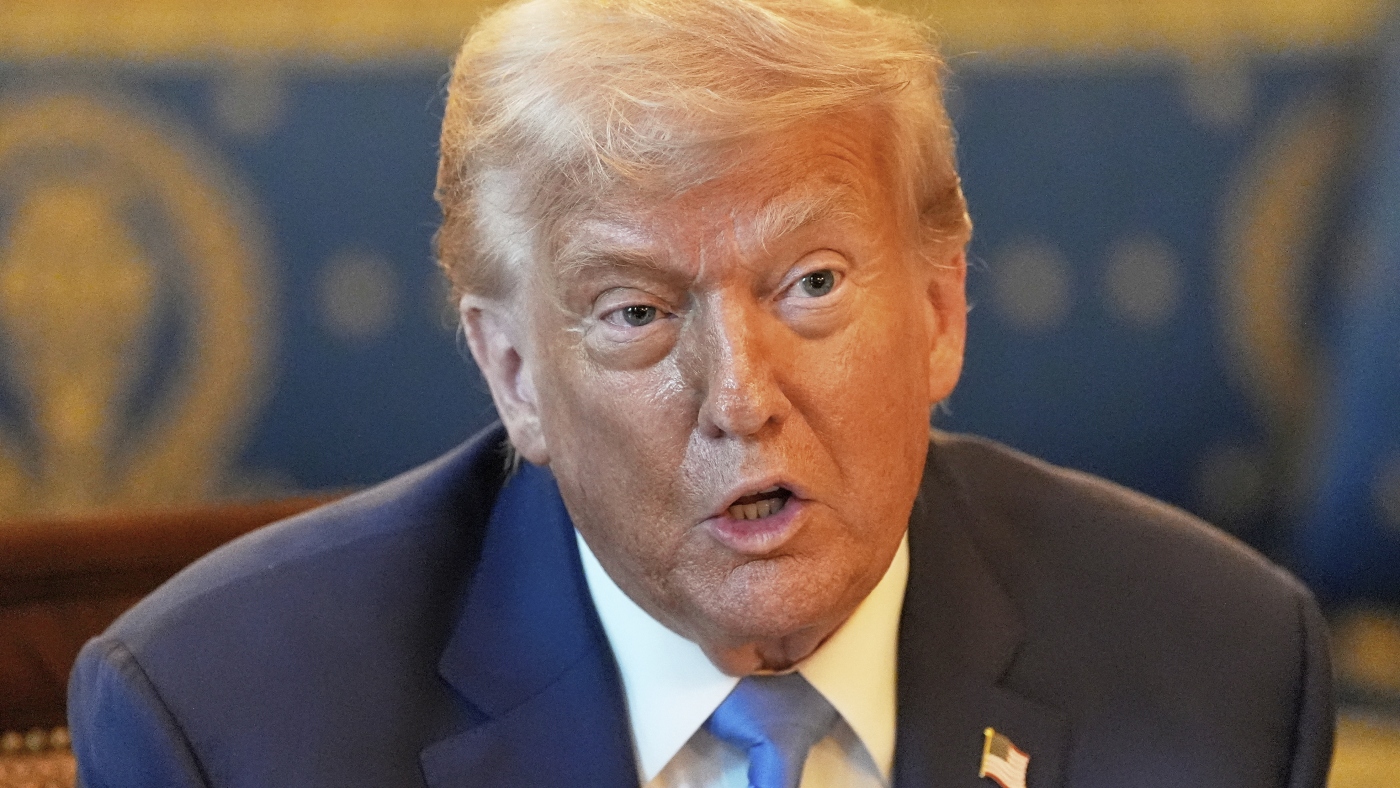The Geopolitical Pendulum: Trump’s Shifting Stance on Ukraine Weaponry
The international stage is rarely a realm of unwavering consistency, and the situation in Ukraine is a stark reminder of this reality. Recent reports indicate a dramatic shift in U.S. policy, with President Trump announcing the resumption of weapon shipments to Ukraine, a move that comes just days after an abrupt halt in such deliveries. This whipsaw effect has sent ripples through diplomatic circles, raising questions about the motivations behind these decisions and their potential impact on the ongoing conflict with Russia. Understanding the nuances of this evolving situation requires a closer look at the context, the potential reasons for the initial pause, and the implications of the resumed support.
A Week of Uncertainty: The Pause and Its Ramifications
The initial decision to pause weapon shipments to Ukraine, announced just a week prior to the reversal, reportedly caught many within the U.S. government off guard, including officials at the State Department and members of Congress. The reason cited by a senior White House official was a review of military spending and American support to foreign countries. However, this explanation did little to quell concerns that the pause signaled a weakening of U.S. commitment to Ukraine’s defense.
The timing of the pause was particularly sensitive, coinciding with escalating Russian attacks and growing dependence on Western-supplied air defense systems and munitions to protect Ukrainian cities. This dependency underscores the critical role that international support plays in Ukraine’s ability to withstand Russian aggression. Withholding such support, even temporarily, can have dire consequences on the ground, potentially emboldening Russia and leaving Ukraine vulnerable.
The pause in aid also raised concerns about the broader implications for U.S. foreign policy. Allies and adversaries alike watched closely to gauge the extent of America’s commitment to its partners. The sudden halt in weapon shipments could be interpreted as a sign of wavering resolve, potentially encouraging other nations to reassess their own alliances and security arrangements. For Ukraine, the pause was not just a logistical setback but a psychological blow, as it raised doubts about the steadfastness of its most powerful backer.
The Rationale Behind the Reversal: A Balancing Act?
The reasons behind President Trump’s sudden change of heart remain somewhat opaque. Several factors could be at play. One possible explanation is a realization of the strategic implications of weakening Ukraine’s defenses, particularly in the face of escalating Russian attacks. Abandoning Ukraine would not only harm its security but also damage U.S. credibility as a reliable ally.
Another factor could be domestic political pressure. The initial pause drew criticism from both sides of the aisle, with many lawmakers arguing that it undermined U.S. interests and emboldened Russia. Public outcry and political pressure may have influenced President Trump to reconsider his decision. The bipartisan support for Ukraine within Congress has been a significant factor in shaping U.S. policy, and the administration may have recognized the political risks of alienating key stakeholders.
Trump himself stated that Ukraine had “to be able to defend” itself, indicating a recognition of the need to provide Kyiv with the means to resist Russian aggression. He also mentioned the intention to send primarily “defensive weapons,” suggesting a focus on helping Ukraine protect its territory and population rather than enabling offensive operations. This distinction could be an attempt to balance support for Ukraine with a desire to avoid escalating the conflict.
Furthermore, some reports suggest that the decision to resume weapon shipments came after attempts to negotiate peace with Russia. It’s possible that President Trump initially hoped to leverage the pause in aid to encourage negotiations, but ultimately concluded that a stronger Ukrainian defense was necessary to achieve a favorable outcome at the negotiating table. This approach reflects a broader strategy of using military aid as a tool to shape diplomatic outcomes, rather than as an end in itself.
Defensive Weapons: A Strategic Choice
The emphasis on “defensive weapons” is a key aspect of the resumed aid package. This likely includes air defense systems like Patriot missiles, which are crucial for intercepting Russian aerial attacks and protecting Ukrainian cities. Other potential defensive weapons could include anti-tank missiles, armored vehicles, and electronic warfare equipment designed to disrupt Russian communications and radar systems.
The focus on defensive weaponry is a strategic choice aimed at bolstering Ukraine’s ability to withstand Russian attacks and deter further aggression. By providing Ukraine with the means to defend itself, the U.S. hopes to raise the costs of Russian aggression and create a more stable security environment in the region. This approach aligns with the broader goal of maintaining a balance of power in Europe, where the U.S. seeks to prevent any single power from dominating the continent.
The provision of defensive weapons also serves to reassure European allies who have been concerned about the potential consequences of a Russian victory in Ukraine. By demonstrating a commitment to Ukraine’s defense, the U.S. can help to maintain a united front against Russian aggression and prevent the conflict from spiraling into a broader European war.
Implications for the Russia-Ukraine Conflict and Beyond
The resumption of U.S. weapon shipments to Ukraine has several important implications for the conflict and the broader geopolitical landscape.
Boosting Ukrainian Morale and Capabilities: The renewed support provides a much-needed boost to Ukrainian morale, demonstrating that the U.S. remains committed to its defense. The influx of defensive weapons will also enhance Ukraine’s ability to resist Russian attacks and protect its territory. This is particularly important as Ukraine continues to face a well-equipped and determined adversary in Russia.
Deterrence and De-escalation: By strengthening Ukraine’s defenses, the U.S. hopes to deter further Russian aggression and create conditions for a negotiated resolution to the conflict. A stronger Ukraine is better positioned to defend its interests at the negotiating table, potentially leading to a more favorable outcome for both sides. This approach reflects a recognition that military strength can be a catalyst for diplomatic progress.
Transatlantic Relations: The decision to resume weapon shipments could also help to repair strained relations with European allies, who have been vocal in their support for Ukraine. A united front against Russian aggression is essential for maintaining stability in Europe. The U.S. and its European partners have a shared interest in preventing the conflict from escalating further and in promoting a peaceful resolution.
Geopolitical Signaling: The resumption of aid sends a clear message to Russia that the U.S. is not willing to abandon Ukraine and will continue to support its right to defend itself. This could influence Russia’s calculations and potentially lead to a de-escalation of the conflict. It also serves as a reminder to other global powers of the U.S.’s commitment to its allies and its willingness to act as a counterbalance to aggressive behavior.
The Path Forward: Navigating a Complex Landscape
Trump’s decision to resume sending weapons to Ukraine marks a significant, albeit belated, step in the right direction. However, the path forward remains fraught with challenges. The conflict in Ukraine is complex and multifaceted, with deep historical roots and competing geopolitical interests at play. A lasting resolution will require sustained diplomatic efforts, as well as continued support for Ukraine’s defense.
The U.S. must work closely with its European allies to maintain a united front against Russian aggression and to ensure that Ukraine has the resources it needs to defend itself. This includes providing financial assistance, humanitarian aid, and military support. Additionally, efforts should be made to engage in constructive dialogue with Russia, exploring potential avenues for de-escalation and conflict resolution.
Ultimately, the goal should be to create a stable and secure environment in Ukraine, where its people can live in peace and prosperity. This will require a long-term commitment from the U.S. and its allies, as well as a willingness to engage in constructive dialogue with Russia. The recent fluctuations in U.S. policy highlight the need for a more consistent and strategic approach to the conflict, one that balances immediate military needs with long-term diplomatic objectives.
A Fleeting Glimmer of Hope?
The recent zig-zag in U.S. policy toward Ukraine, characterized by a sudden pause followed by a hasty resumption of weapon shipments, underscores the unpredictable nature of international relations. While the renewed commitment to providing defensive weaponry offers a glimmer of hope for bolstering Ukraine’s resilience against ongoing Russian aggression, it also serves as a stark reminder of the delicate balance between geopolitical strategy, domestic political considerations, and the human cost of conflict. Whether this latest development signifies a genuine shift toward sustained support or merely a temporary adjustment in a larger game of power remains to be seen. The people of Ukraine, caught in the crosshairs of this geopolitical chess match, can only hope that it heralds a more secure and peaceful future. The international community must remain vigilant and committed to supporting Ukraine, ensuring that the current momentum toward stability and security is not derailed by further fluctuations in policy. The stakes are high, and the consequences of inaction or inconsistency could be dire for Ukraine and the broader region.


